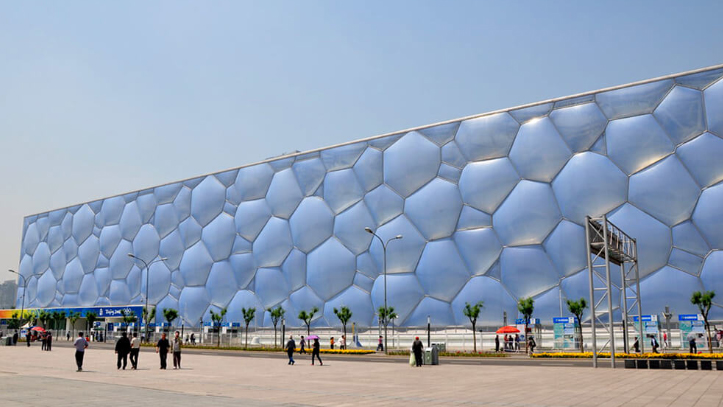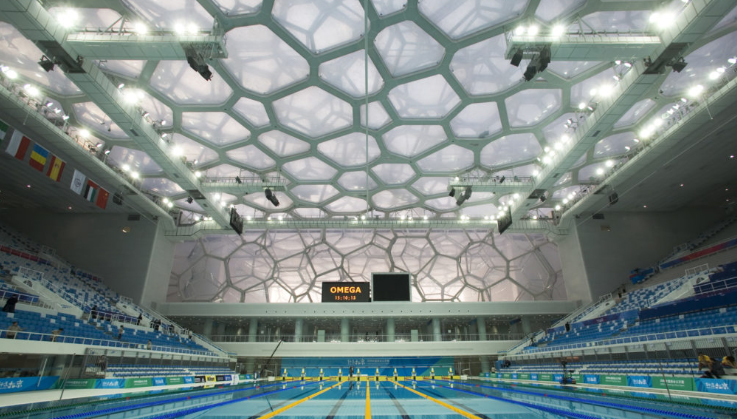The Water Cube, the National Aquatics Center for the Beijing Olympics, is a notable example of the use of tensegrity in architecture. Designed by PTW Architects and Ove Arup & Partners, the building features a tensegrity roof structure made up of interconnected hexagonal and pentagonal cells.
One of the key features of the Water Cube’s tensegrity roof is its ability to distribute loads evenly throughout the structure. The roof is made up of a network of cables in tension, with a series of steel trusses in compression connecting the cables to the building’s foundation. This allows the roof to withstand large loads and resist lateral forces, such as wind and earthquakes.
Another benefit of the Water Cube’s tensegrity design is its efficiency and lightweight nature. Because the roof relies on tension rather than compression, it requires fewer materials and can be assembled more quickly, reducing construction time and costs.
In addition to its structural benefits, the Water Cube’s tensegrity roof also offers aesthetic appeal. The geometric shapes and interconnected components create a unique visual effect, making the building a standout feature in the Beijing skyline.
Overall, the Water Cube’s use of tensegrity in its roof structure demonstrates the potential of this structural principle in creating lightweight, efficient, and dynamic buildings.

